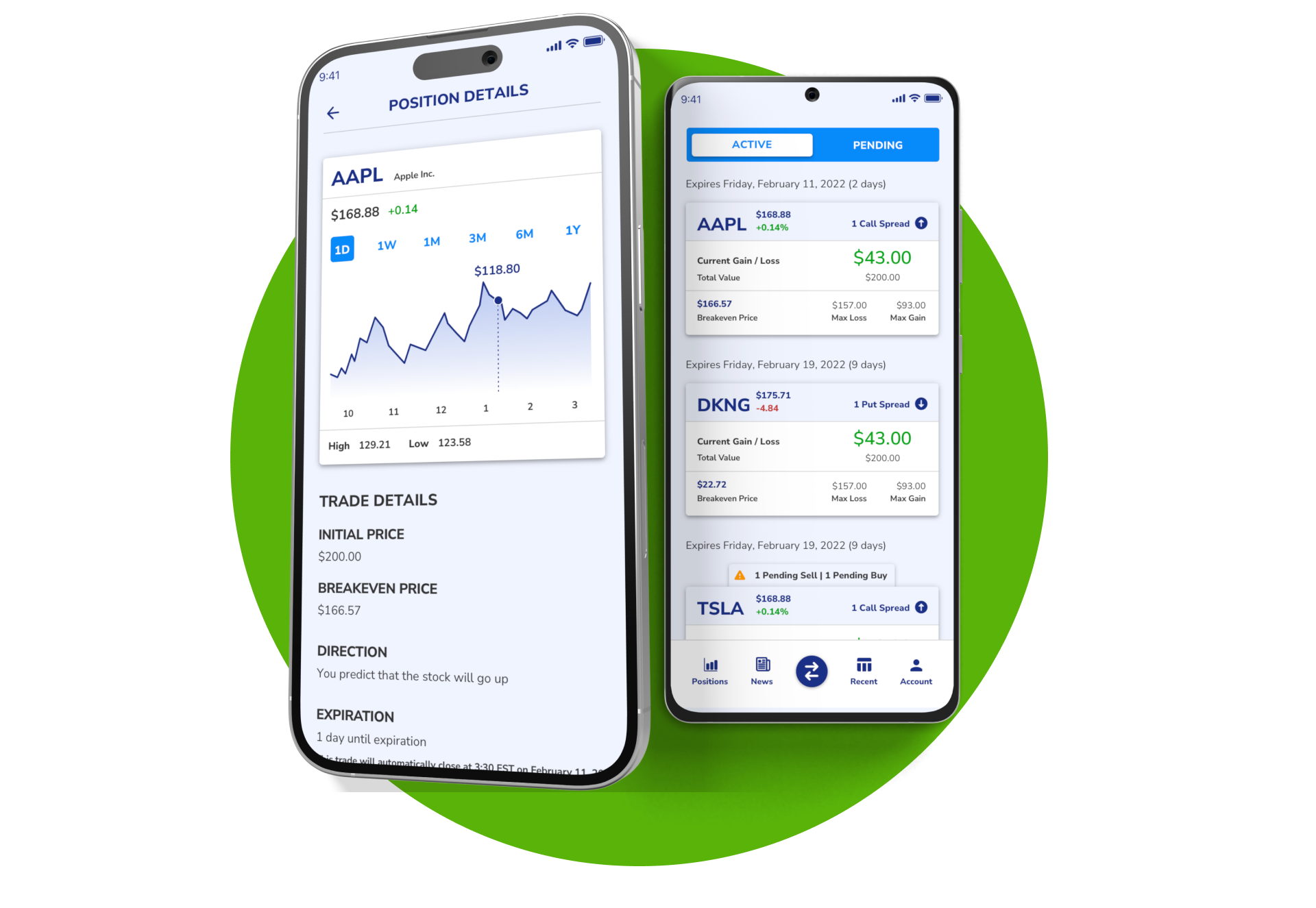- Home
- Grow a marketplace
- Optionality
Demystifying options-trading for non-pros
Optionality — a financial startup — had a vision for improving the very complex world of options trading. Truefit helped their founders to create a mobile app that is inclusive of traders at all experience levels to make trades with confidence.


At-a-Glance
To get started, Truefit delved into user experience research with prototypes to understand the needs and behaviors of new traders. Our engineering team did extensive R&D work required to comply with SEC regulations and intense security requirements. Our team navigated multiple complex fintech integrations to get quotes, make trades and move money while satisfying app store requirements.
Delivering customer value that creates business impact
Desired business impact- Establish a new brand around financial expertise and know-how
- Attract options-traders at all levels of experience
- Receive positive reviews and word of mouth
- Establish a high retention rate among users
- Simple and easy-to-use
- Clear, easy-to-read guidance regarding upside potential versus risk
- Trustworthy and secure
- Clear, timely reporting of all position changes through expiration
Impacts to date
SEC approval on all security requirements
Successful launch on app store
Startup acquired by Lightspeed, a leading provider of brokerage services.

“By far the best app for trading options and actually making a good profit. The experience you get trading on Optionality is unmatched. It’s extremely easy to understand even if you’ve never touched options.” — from an App Store customer review
Product Details



How we did it
Kickoff
We learned about our clients product vision, strategy, and business model.
Technical audit
Our team went to work to understand their proposed approach to managing risk and educating non-professional investors about ways to invest prudently.
Early user research
We conducted a week long diary study with a mix of investors based on experience using fake money to see who could manage trades using the Optionality methods most effectively. We could identify needs and insights.
Software architecture and strategy
Because this market had sizably complex requirements for managing trades and security, our engineers had to dig in and get familiar with the regulatory environment in order to make informed recommendations.
Integrations homework
It takes numerous integrations to make a system like this work. We identified services to manage spreads, access banks, get quotes, and place trades.
Integrations and foundation
We conducted multiple calls with integration partners to make sure we selected the most reliable, scalable, and affordable options. In addition, we laid the foundation for video — the riskiest part of the project.
System architecture
We defined the system components and data endpoints for an integration with Shopify and Garmin Connect so users could automatically record details about their runs.
Design foundations
We collaborated as a team to define information architecture, content models, and key workflows for each feature. As design patterns started to emerge we explored visual UI style options to stay on brand.
Release planning
We collaborated with our client to define what must be present in the initial release in terms of foundations, core requirements, and feature functionality.
Build, build, build!
We designed, coded, and tested on a weekly basis until we were feature complete for the first release. Progress was demoed on a bi-weekly basis.
Finalize the content
Working with our client, all training content and final language was completed prior to app store submission.
SEC and app store approval
The app had to be submitted to the SEC for regulatory approval before submission to the app stores. We passed all reviews with flying colors.
Prepare for launch
Once the app was complete, we assisted our client in setting up their app store accounts for approvals and ongoing management. The apps were approved and are available in the App Store and Google Play for download.